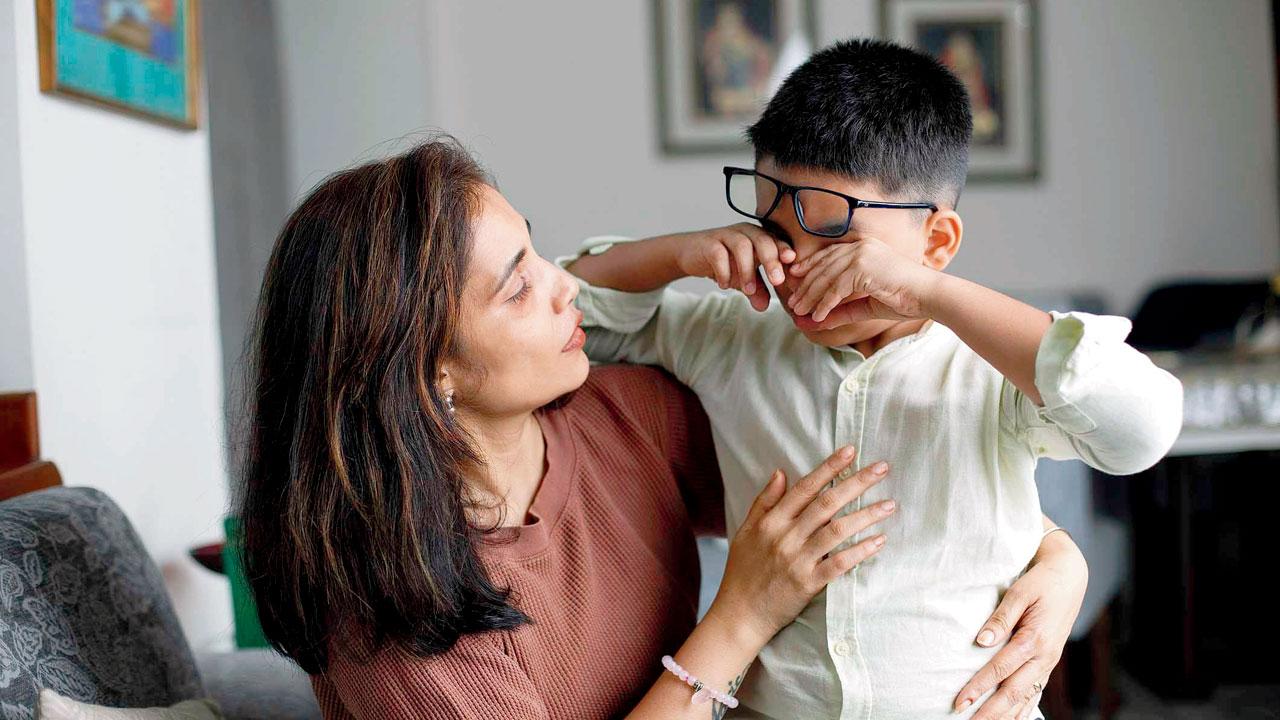The death of an Indian teen in Singapore due to sleepwalking once again puts the focus on this condition. Experts decode how to gauge and work around it with self-care and family support

Instead of abruptly waking up a person who is sleepwalking, gently guide them back to bed. Representation pics
Last week, this newspaper reported the death of a Kandivali-based teen after he sleep-walked and fell from the tenth-floor balcony of a Singapore hotel while on vacation with his parents. Dr Joy Desai, director, neurology and The Sleep Clinic at The Jaslok Hospital and Research Centre at Pedder Road contextualises the condition in light of this unfortunate incident. Also known as somnambulism, it is the act of walking during sleep without awareness. He elaborates, “When we transition into sleep from wakefulness, the electrical record of the brain (electroencephalogram) progressively slows down, and results in the inability to maintain awareness of the surroundings, and our response to change. During this phase, we cannot perform purposeful or semi-purposeful acts.” It is called NREM or Non-Rapid Eye Movement sleep, and is usually followed by REM (Rapid Eye Movement) sleep.
ADVERTISEMENT

Medical and mental health professionals can help you manage sleepwalking
Such phasic changes in the electroencephalogram occur five to six times in an eight-hour sleep period, and are uniform throughout the anatomical extent of the brain. He continues, “In some individuals, a local and segmental network in the sleeping brain may remain electrically awake. If this includes networks that determine motor acts such as walking, it results in somnambulism.” Dr Desai adds that children and adolescents may experience a temporary phase of sleepwalking during their development period, which can be exaggerated by poor sleep hygiene. “Somnambulism is different from the enactment of dreams in REM sleep. The latter is REM sleep behaviour disorder and antedates degenerative parkinsonism by a decade or more,” he states.
Don’t sleep over it

Dr Aparna Govil Bhasker (left), bariatric and laparoscopic surgeon, reveals, “They will be partially awake and engage in eating, talking, preparing food, urinating in places that aren’t toilets, trying to leave the house, talking during sleep, looking dazed, not responding when spoken to, or undecipherable responses.” The individual will usually not act violently.

Dr Pavan Pai (left), consultant interventional neurologist at Wockhardt Hospitals, Mira Road, lists precautionary measures for patients and their families. This includes locking windows and doors, avoiding sleeping on the top bed of bunk beds, keeping away pointed, dangerous objects, and obstacles around their bed, informing travelling companions, and timely intervention by a specialist. Dr Desai adds, “Some neurologists suggest using melatonin supplements to harmonise sleep networks in these patients.”
Utkarsha Jagga, counselling psychologist, reiterates the importance of maintaining a consistent sleep schedule, creating a sleep-conducive environment by reducing external noise or light to minimise disturbances, practising relaxation techniques before bedtime, and avoiding sleep deprivation by limiting consumption of stimulants like coffee or alcohol before bedtime. With time, following such steps can prevent escalation and control sleepwalking.
All-round support

Jagga suggests that loved ones should gently guide the person back to bed rather than abruptly waking them up which could disorient and confuse them. Kanchan Wadi (above), family counsellor and wellness therapist, suggests that if a member notices a pattern in the episodes, they can awaken the individual before the anticipated time of sleepwalking and help them fall sleep after a few minutes.
After a sleepwalking episode, Jagga elaborates that the person might not remember what happened but may report feeling confused, anxious, embarrassed or fatigued, “Here, it is important to extend emotional support apart from other accommodations that are made for them.” Wadi believes that mental health professionals can help provide a safe space with stress-alleviation practices.
Therapy matters

While the causes of sleepwalking are not fully understood, Jagga (left) believes that certain emotional factors as well as a combination of genetic, environmental, and physiological factors can potentially contribute to or trigger sleepwalking episodes. For instance, stress, anxiety, past trauma, fatigue, sleep deprivation, or emotional arousal during sleep. Therapy could involve trauma-focused interventions, cognitive restructuring, psychoeducation, and relaxation practices. “If you suspect that trauma or dissociation may be factors contributing to sleepwalking, seek help from a mental health professional or sleep specialist,” Jagga notes.

Wadi maintains that a professional can help diagnose the underlying cause of sleepwalking by collating symptoms, conducting physical exams, noting the family history and advising a nocturnal sleep study. It will help conclude if the phenomenon is part of a sleep disorder, an effect of medication, a result of emotional trauma or sleep deprivation, and treat the individual accordingly. Solutions can also include hypnotherapy to identify the cause of their stress and alleviate it in a state of hypnosis; or cognitive therapies to address chronic emotional pain that could possibly underlie this condition. “A holistic approach can include a combination of therapeutic modalities, lifestyle changes, nutritional supplements and mindfulness practices,” Wadi concludes.
Case Study

Riya Khanna, a 27-year-old and an entrepreneur, was experiencing episodes of sleepwalking brought to attention by those around her. Utkarsha Jagga, counselling psychologist, first asked Khanna to ensure her safety by sleeping in a safe sleep environment or sleeping next to someone. It took multiple therapy sessions to understand and process the underlying causes of the episodes, which included sexual trauma. Along with processing the trauma with Jagga’s counselling, Khanna adopted a strict sleep schedule and sleep diary where she would log her sleep timings, feelings and thoughts before bed and if she recalled a sleepwalking episode. Gradually, after 15 months, the sleepwalking episodes reduced.
(Name changed on request)
 Subscribe today by clicking the link and stay updated with the latest news!" Click here!
Subscribe today by clicking the link and stay updated with the latest news!" Click here!







